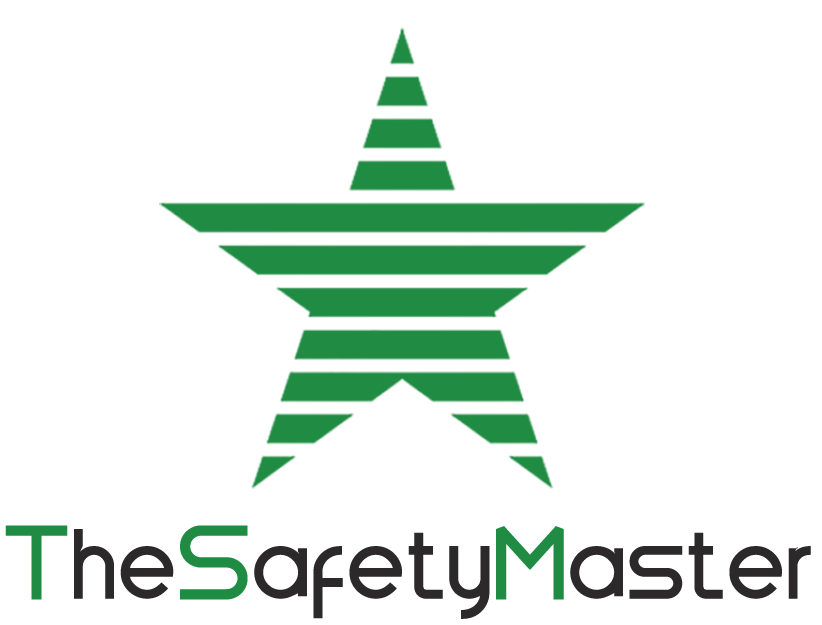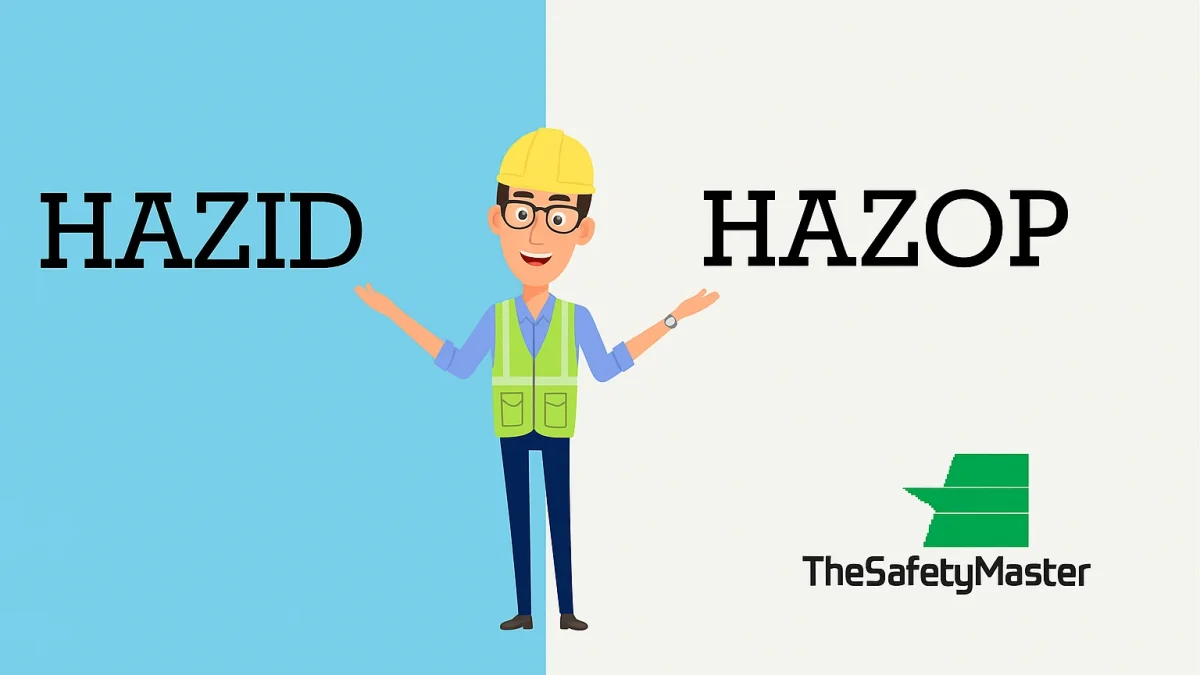HAZOP vs HAZID Study: A Comparative Guide to Hazard Identification in Industry

Safety Governance and Team Development Services: The Safety Master Approach
June 6, 2025
Comprehensive Guide to IS 14489: Safety Audit Checklist and Standards
July 2, 2025In complex industrial operations, especially in oil & gas, petrochemical, and manufacturing industries, identifying and managing potential hazards is a critical component of risk management. Among the most widely recognized methodologies for hazard identification are HAZOP and HAZID studies. While they are both essential tools in the safety lifecycle of a process, they serve distinct purposes, follow different methodologies, and are conducted at varying stages of project development. This article provides an in-depth comparison of HAZOP vs HAZID to help understand their applications, benefits, and differences.
What is the Meaning of HAZOP?
HAZOP meaning refers to “Hazard and Operability Study.” It is a structured and systematic technique for examining potential risks in a process system. The method aims to identify how deviations from the intended process design can lead to hazardous situations or operational problems.
The Hazop Study is typically conducted during the detailed design phase or in operational stages of a facility. It focuses on the technical processes, using guide words like “more,” “less,” “reverse,” “as well as,” etc., to explore deviations in parameters such as temperature, pressure, flow, and composition.
The goal is to uncover:
- Safety hazards to personnel and environment
- Equipment failure modes
- Operability issues that may affect efficiency or product quality
What is the Meaning of HAZID?
HAZID meaning stands for “Hazard Identification Study.” Unlike HAZOP, which focuses on process deviations, HAZID is a broader and more qualitative technique designed to identify potential hazards in a facility, activity, or location, often during the conceptual or early design phase of a project.
Hazid Study includes input from a multidisciplinary team and uses structured brainstorming sessions to evaluate various types of hazards:
- Environmental risks
- Natural disasters (e.g., earthquakes, floods)
- Human errors and external threats
- Safety risks during construction or maintenance
HAZID studies are especially beneficial when planning new installations, expansions, or site selection to ensure potential risks are understood and addressed early.
Key Differences Between HAZOP and HAZID
While both HAZOP and HAZID aim to enhance safety, their methodologies, focus areas, and timing differ significantly. Here’s a detailed breakdown:
1. Timing in Project Lifecycle
- HAZID is typically performed during the conceptual or feasibility stage, helping shape the risk profile of a project from the beginning.
- HAZOP is applied during the detailed design or operational phase, ensuring that process-related risks are identified and mitigated.
2. Objective and Scope
- HAZID looks at external and overall hazards, including environmental, construction, and human factors.
- HAZOP focuses on internal process risks, assessing design deviations in a process flow.
3. Methodology
- HAZOP uses a systematic, parameter-based approach with predefined guidewords.
- HAZID employs brainstorming and qualitative analysis, often using checklists and expert judgment.
4. Team Composition
- HAZID teams include experts from various disciplines: engineering, HSE, operations, and sometimes public authorities.
- HAZOP teams consist of process engineers, instrumentation engineers, and a dedicated facilitator with deep process knowledge.
5. Documentation and Tools
- HAZOP involves extensive worksheets, piping and instrumentation diagrams (P&IDs), and detailed documentation.
- HAZID relies on hazard logs, project descriptions, and high-level process layouts.
Role in Process Safety Management
Both HAZOP and HAZID are foundational elements within a broader Process Safety Management (PSM) framework. PSM is designed to prevent accidents and releases involving hazardous substances through rigorous design, operational discipline, and continuous monitoring.
- HAZID supports the initial risk assessment and site planning phase of PSM.
- HAZOP helps fulfill the requirement for detailed process hazard analysis (PHA), a core component of most regulatory safety standards.
Integrating both studies into your PSM program ensures comprehensive risk coverage from concept to operations.
Importance for Safety Audits and Compliance
In India and globally, industries are increasingly required to demonstrate robust hazard identification and risk management strategies as part of regulatory or internal compliance programs. Incorporating both HAZID and HAZOP strengthens your position during a Safety Audit, helping demonstrate:
- Early identification and control of risks
- Effective design and operational safety
- Regulatory and environmental compliance
- Preparedness for emergencies
Furthermore, insights from HAZOP and HAZID can also highlight areas that may require a specialized Fire Audit, particularly in facilities handling flammable substances or where emergency response strategies need validation.
Choosing the Right Study for Your Industry
Different industries and project stages will benefit more from one study over the other, although both are often used together in a comprehensive safety plan.
- Oil & Gas and Petrochemicals: Typically require both HAZID during design and HAZOP pre-commissioning.
- Construction and Infrastructure: Focus more on HAZID to account for site-specific environmental and human hazards.
- Pharmaceutical and Chemical Processing: Rely heavily on HAZOP to monitor process integrity and prevent batch failures.
Engaging a professional Safety Consultant ensures these studies are implemented effectively, tailored to industry norms and specific project risks. Consultants bring in external expertise, facilitate structured sessions, and deliver actionable insights for design and operational improvements.
Complementary Nature of HAZOP and HAZID
Rather than viewing them as alternatives, HAZOP and HAZID should be seen as complementary tools in the hazard identification process. A well-planned project lifecycle typically includes:
- HAZID at the early phase to identify broader risks.
- HAZOP before commissioning to assess process-specific risks.
- Follow-up actions including design changes, safety measures, training, and further assessments like Fire Audit or emergency response drills.
When used in tandem, these studies provide a 360-degree view of potential hazards, forming a strong foundation for overall operational safety.
Conclusion
Understanding the difference between HAZOP vs HAZID is essential for designing and maintaining safe industrial environments. While HAZOP dives deep into process parameters to detect deviations and failure points, HAZID casts a wider net to evaluate general and external hazards early in a project.
Both methodologies play distinct yet interconnected roles in risk management, compliance, and overall safety culture. Incorporating these studies into your safety programs, supported by expert Safety Consultants, is not just a regulatory necessity but a proactive step toward building resilient industrial operations.




